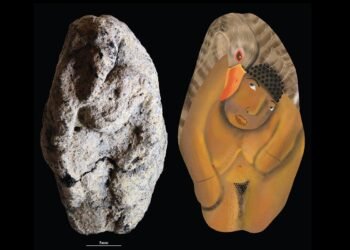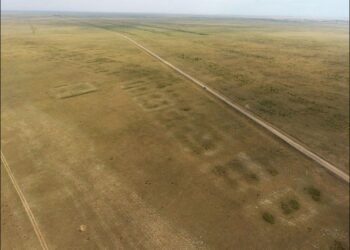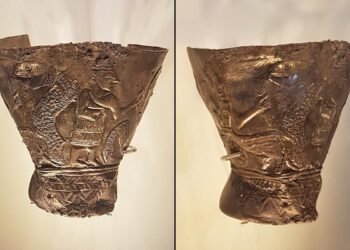Archaeological excavations near the German village of Krauschwitz in Saxony-Anhalt have uncovered a remarkable glimpse into ancient life: beautifully decorated bags—likely used as baby carriers—buried alongside women of the Corded Ware culture some 4,500 years ago. The discovery, made ahead of the SuedOstLink power transmission line project, sheds new light on motherhood among elites, funerary traditions, and social structures in Neolithic Europe.

The excavations are being carried out by the State Office for Heritage Management and Archaeology of Saxony-Anhalt (LDA) in close collaboration with transmission system operator 50Hertz. Covering a 170-kilometer-long route from Wolmirstedt to Droyßig, the SuedOstLink project passes through an area rich in ancient settlements and burials. In total, archaeologists documented many prehistoric features, including 15 Middle Neolithic Baalberge burial mounds and 15 Corded Ware graves within the corridor of the power line.
Among the most significant finds are three Corded Ware burials with highly decorated bags made of organic materials—leather or fabric, in all likelihood—that have long since decayed. What survives, however, are hundreds of pierced dog teeth that were once sewn onto the bags in painstaking, overlapping rows. The bags themselves were approximately 30 centimeters in length and 20 centimeters in height, requiring some 350 teeth to complete. Those teeth came from a medium-sized dog breed, not unlike the modern Small Münsterländer, which researchers believe was deliberately bred and sacrificed at a young age to produce the lavish ornamentation.
“The pierced teeth were sewn together like roofing tiles across the fronts of the pouches,” said archaeologists at the LDA. The pouches were worn in front of the body, usually suspended from wide belts also decorated with wolf teeth. Among the interesting discoveries were several bags found with the remains of infants or fetuses inside, indicating that they may have served as prestigious baby carriers. Protective cloths, including 20-centimeter-wide shawls embroidered with sequins and lined with dog molars, also testify to an advanced childcare practice among the Neolithic elite.

According to the LDA, the exquisite bags appeared in about 20% of the women’s burials analyzed to date. This, combined with the resources and time needed to create them, lends weight to the notion that the pouches were extremely personal items reserved for an elite group. In a case of interest, one burial in nearby Nessa, just 1.7 kilometers from Krauschwitz, contained a woman buried with a similar pouch and the remains of a fetus, again supporting the association of these objects with elite maternal identity.
The Krauschwitz site also revealed five mounds of the Baalberge culture dating back to some 6,000 years ago. The mounds were constructed from trapezoidal wooden huts over graves and covered with loess soil, creating visible landmarks that represented both reverence for the dead and communal power. Though no longer visible above the ground, the trenches of the foundations and grave pits are intact and still yield valuable information about early Neolithic ritual and landscape use.
Interestingly, it appears that these Baalberge mounds influenced the later Corded Ware communities, who chose to place their burials alongside these earlier tombs. The Corded Ware culture, which stretched from Alsace to Ukraine and from southern Scandinavia to the Alps, maintained strict burial traditions—placing the dead facing south, men on the right side, women on the left—and interring them with items that reveal gender and status. Men’s graves usually held stone axes, and women’s graves held ceramic vessels, jewelry, and tooth-decorated pouches.
The burials containing the pouches are being recovered in massive blocks of earth and will be examined in detail at the State Office for Heritage Management and Archaeology laboratories. Excavation at Krauschwitz will continue through July, after which archaeological clearance will allow the SuedOstLink power line construction work to begin.























Comments 0